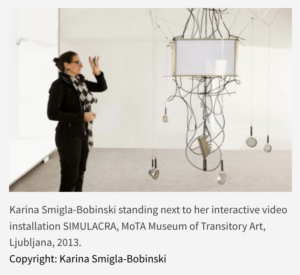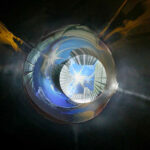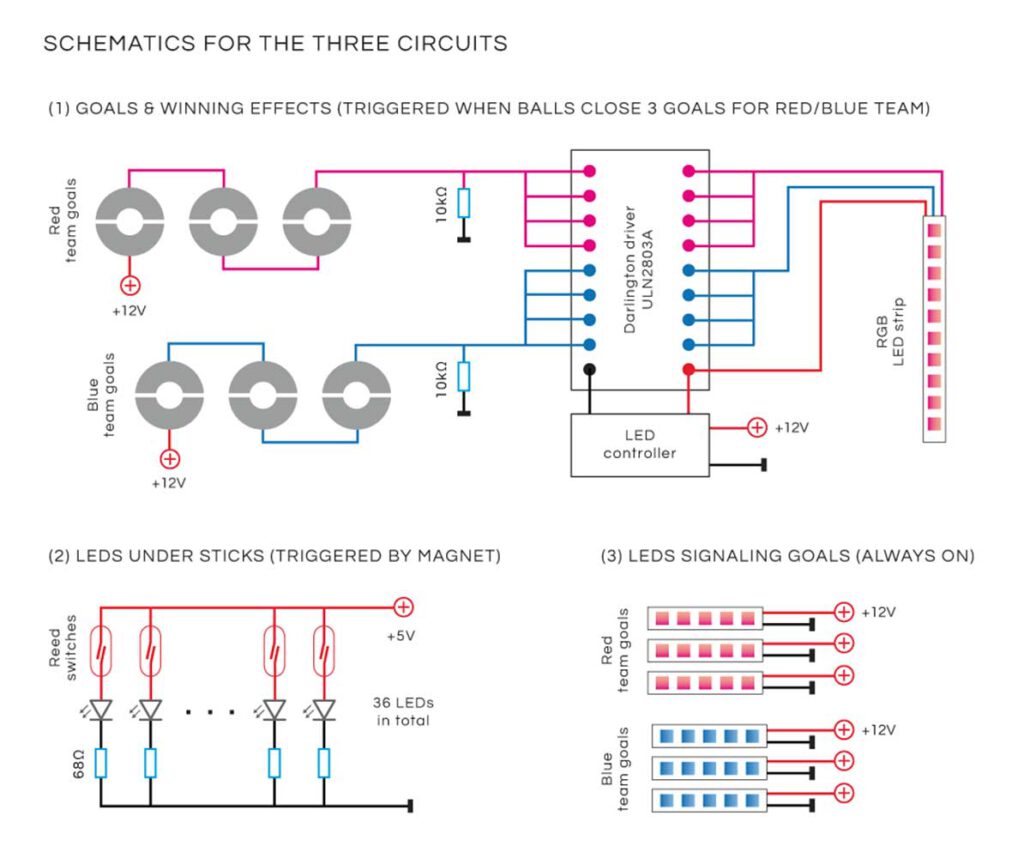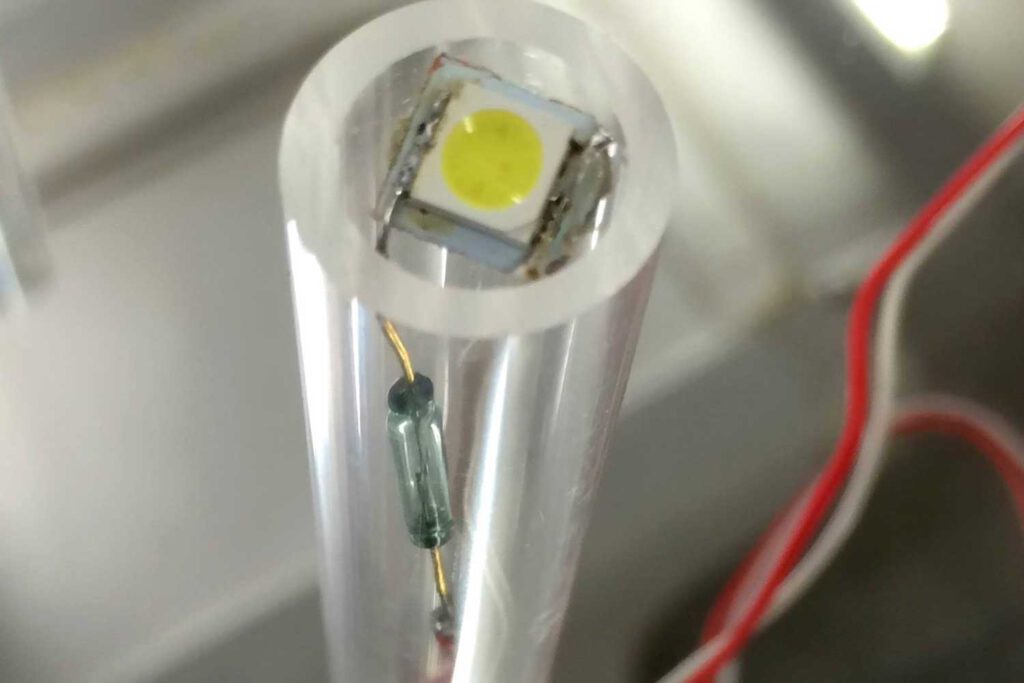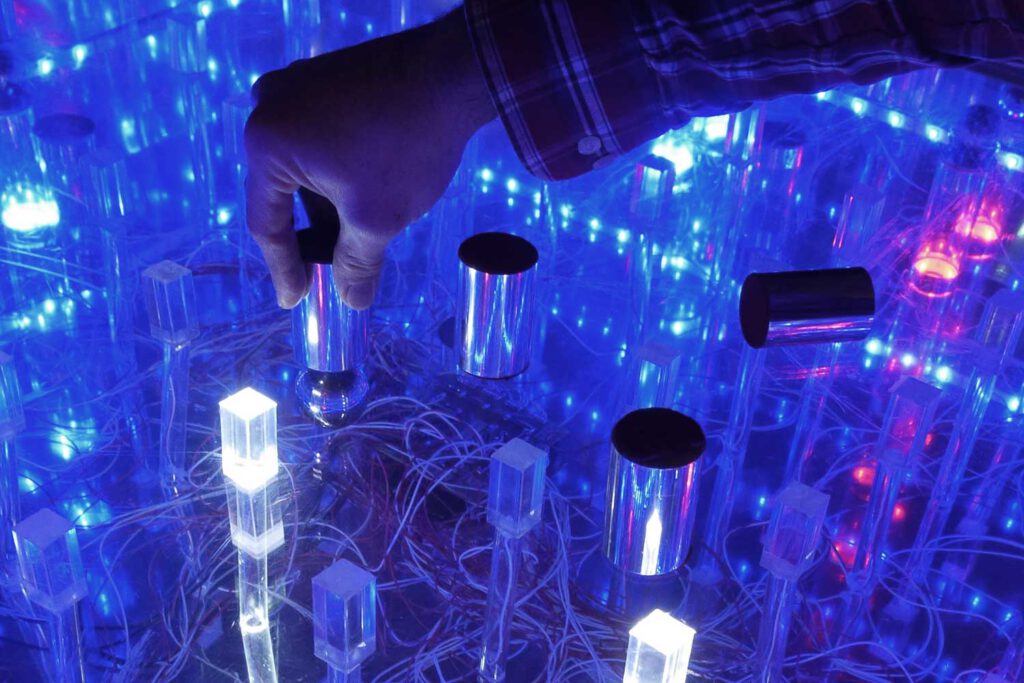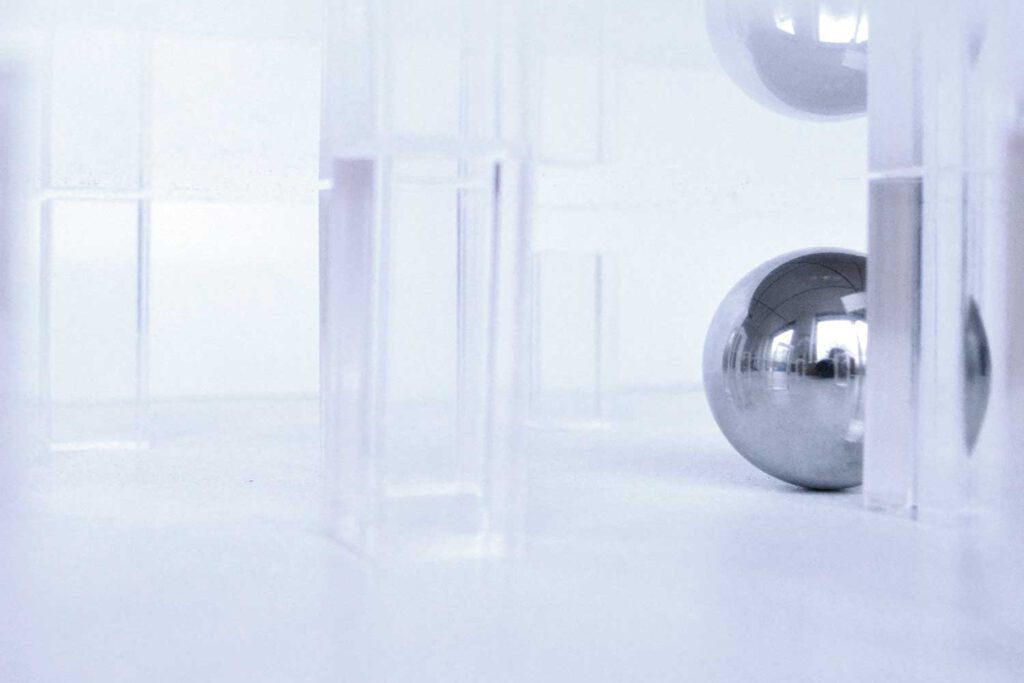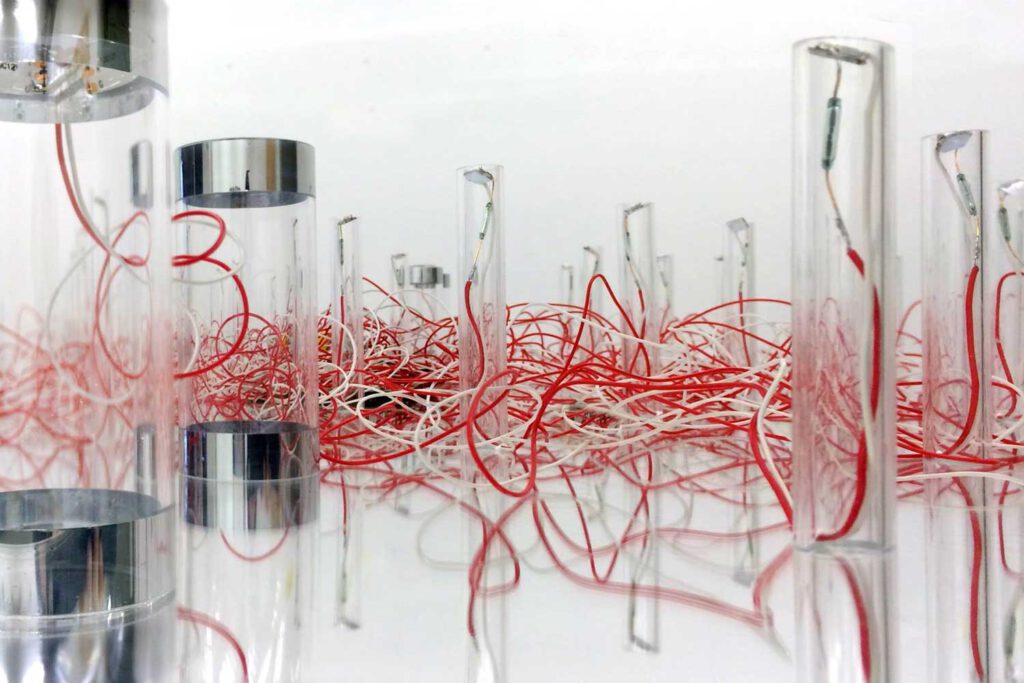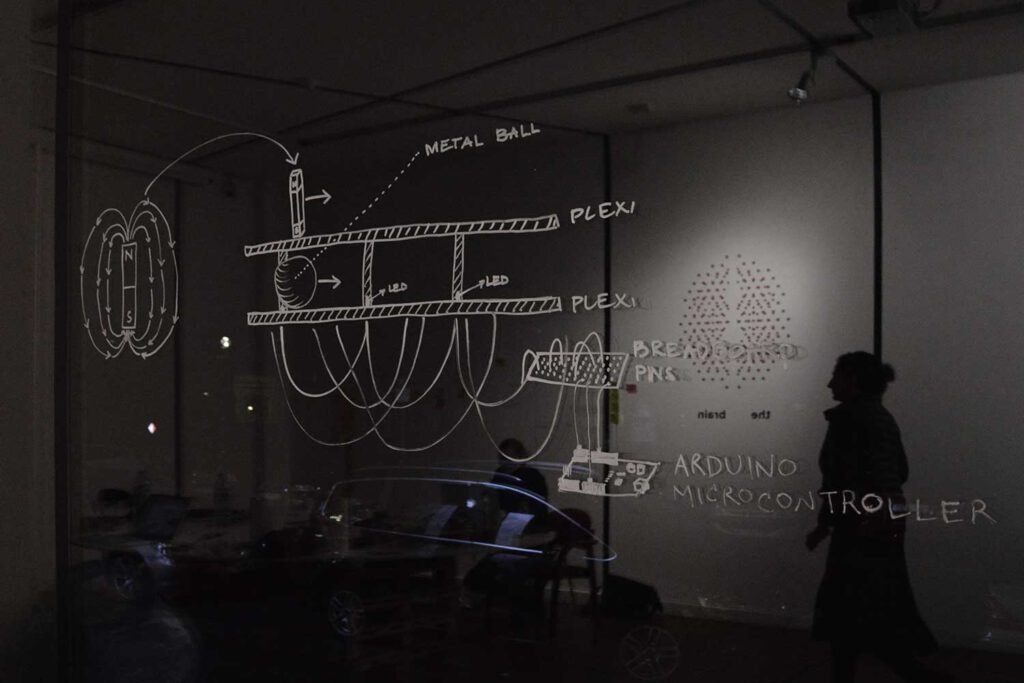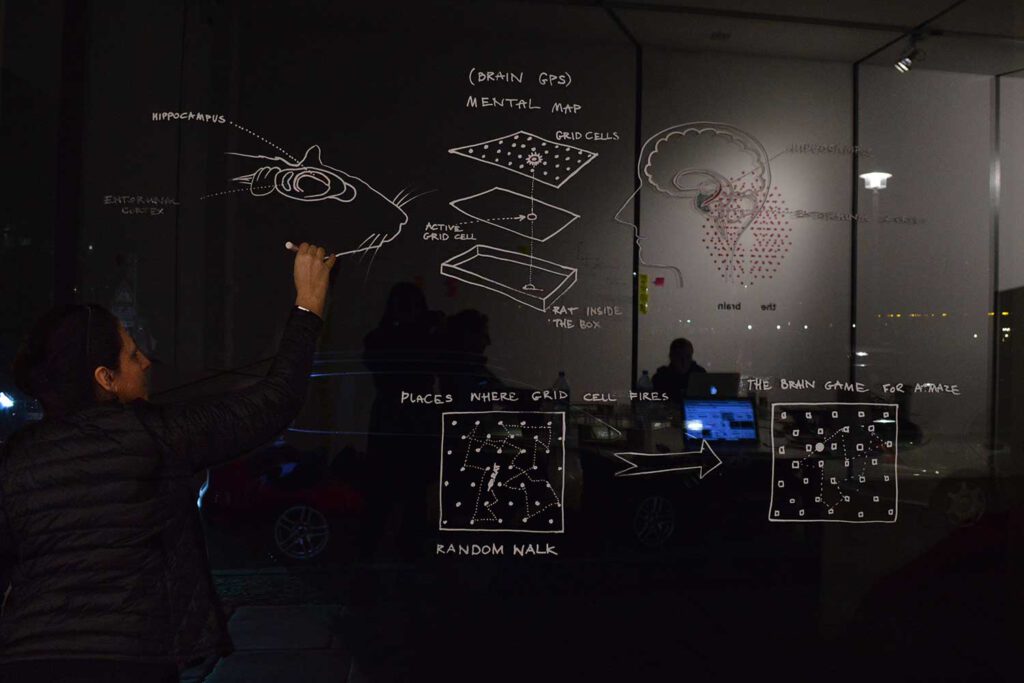WORMHOLE – video installation in public space
The theme of the 2008 Busan Biennale, „Expenditure“, is based on Georges Bataille’s notions of consumption and excess as principle agents of the creative process, hence irony and paradox become key elements in this process. This is not a calculated approach to reason but an immeasurable area, one that is created via the internal experience without any guarantee of a result or conclusion. “Voyage without Boundaries “ is an exhibition that explores Bataille’s notion of surplus and energy as an agent of the creative process, which is not easily understood or defined.
Sea Art Festival as a part of 2008 Busan Biennale runs under the title „Voyage without boundaries“
“Voyage without Boundaries “ symbolizes a journey towards some unknown space. Modern concepts of travel are encapsulated in a linear Euclidean space: one that has a concrete beginning and end. Great ocean voyages of the past to today’s travel in our global village follow routes based in some concept of space starting from some beginning to some end point. As much as Euclidean concepts have been forced to change with discoveries in non- Euclidean geometry, so space and knowledge are not arrived at by a linear and defined journey, but by experiential observation.
Intellectual voyages that discovered the lands of the non-linear and non-Euclidean have validated the artistic voyage in a unique way. This new voyage allows us to transcend those epic voyages of the past and their historic inevitabilities of exploitation and rule. „Voyage without Boundaries“ is an artistic exploration that goes beyond the conventional wisdom of time and space, and allows us to form voyages of our own that have no defined inevitabilities.
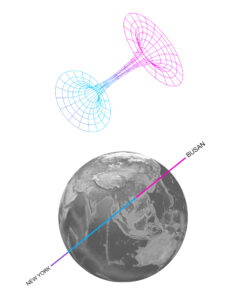
The wormhole is a metapher which comes from the image of a worm, bitting his way right through an apple.
A wormhole therefore connects 2 sides of 1 space, with a tunnel. 2 places that lie on 2 different sides of the earth (e.g. Busan – NYC)and geographically are far away from each other, seen to converge through modern technology and globalisation, just as through a wormhole between them exists. I would like to create such wormhole with my work.
Through the hole, which starts in Busan, you can see other cities all over the world, their houses and people, who also look through it. You would also be able to see the sky and therefore into the infinity, the cosmos. It is a connection between two cities but further more it is also a connection of the infinity lying on both sides of the world. There is no beginning and no ending, just two perspectives. Travelling with the means of wormholes, although theoretically possible, is going to remain a dream. The surplus of energy needed will probably never be avaible.
The word mandala means circle, ring or plate. Originally the mandala was used to illustrate the world. Nowadays it is used to express something mental into something visual. The implementation is said to guide to an higher mental concentration. The Ego, in the buddhist sence, the origin of all suffering, is to be overcome and finally all earthly and material thinking exceeded. Bataill was fascinated by the buddhist ideas. The order of houses, trees etc. are to remind of such mandalas and their centralised order.
The theory of the hollow earth was scientifically approved until 19th century and had many great representatives like Edmund Halley (17TH century) from the Royal Society of Science. The Theory said, that the earth is hollow and that there were manholes lying at the poles. Many tried to find there manholes, there are several travellreports and articles abouts them. Some claimed to have reached the middle of the earth, some place with its own sun. The place was said to be inhibited by people living on an higher step of civilisation. This ideal of a society is similar to our modell of a global village or to the new better society in terms of Bataille…or it could be even one of his experiments.
Todays search after the life in space is a continuation of this yearning.
2013 © Dr. Thomas R. Huber
DIG DEEPER
The Notion of Expenditure – visualisation by Nora Willauer
2008 Busan Biennale, „Expenditure“ – Online archive
ART CONNECTIONS
OTHER WORDS
On Wormholes, Hollow Earth and Mandalas
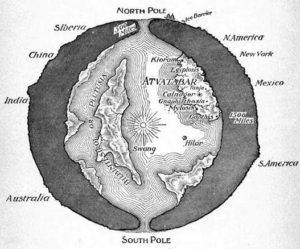
Where is that other side? Did Alice fall through a wormhole when she fell into her Wonderland? Yet the Einstein-Rosen bridges had not in general relativity been realised when Lewis Caroll sent his Alice hurtling through time and space. „All time is eternally present. In my beginning is my end“. So maybe those space time tubes acting as short cuts between vast distances existed long before they were discovered by man.
Journeying on time-travel, the nomads of imagination plunging into a hollow earth to find new civilisations not at the other end but at its very centre, the unending yet futile search for a better, for an other humanity. The entry into brave new worlds or utopias, and what does it mirror? „Hollow men“ and women in a wasteland, „headpieces filled with straw“? A Kingdom where the sun never sets? With its religious, if you will, Christian overtones of theopolitics and theoeconomics and theocolonialism making a perfect metaphor for, and dovetailing neatly into, the other present day Empire of globalisation, of the New World Order, where the dance around the golden calf of Christian lore now metamorphosed into a chase of the golden deer of Capital, this shy creature, wary of social justice, and always ready to run –away from responsibility, from rooting. Its golden and silver dung dropping through global wormholes and cyber tunnels that span the globe and connect the world – virtual and real – on which the sun never sets. Electronic data gathered by cyber coolies, sitting in miniscule cubicles, for cyber lords. Is this connectivity – all these hotlines and call centres in Calcutta or Ougadougou? And is this productivity, all this outsourcing to China or Rumania? Or is this all just a subtler form of slavery?
One man’s gasoline is another man’s hunger. Globalisation gone mad. Reflections, spitting images, digitally pixelled beamed illusions or Maya?
And the nomads of imagination now soaring -bound by no boundaries –to create art, for instance, ancient mandalas made with a crushed sand of precious or semiprecious stones. To labor for days tracing intricate patterns only to erase it on completion. Chanting Tibetan monks on one side of the world sweeping their mandala into a jar and pouring it into water, into the stream, the river, the sea. In my end is my beginning. And on the other side of the world Navajo American Indians also destroying their sand painting, their work of labour, before dawn to maintain harmony. Only the impermanant is permanent. This is the ultimate luxury in the Bataille sense of the word: the creation of art, and with its erasure the destruction of riches – a wasteful expenditure which cannot be accounted for by the principle of gain.
Come a storm, come the tide, the work is reclaimed and incorporated into the cycle of life or it is released through the cosmic hole. Thus the voyage without boundaries may begin. And on the wind swept shores of Busan one hears the creakings of self-mockery.
Hamburg 2008, © Navina Sundaram; journalist and filmmaker
> Web version on www.porta-polonica.de
Halfway through her painting course Karina Smigla-Bobinski gave up the two-dimensional media in order to experiment with light and video installations. From then on space has been her favourite place in which to realise her art. She recognises the great potential of an active audience and thus designs the places where she works into collective spaces for active and creative participants. She regards her art as a medium of communication. Her works are materialised events springing from her observations and thoughts in the border area between art, science and philosophy. Karina Smigla-Bobinski lives in Munich. Anyone who wants to contact her will be more likely to meet her at one of the many art festivals in one of the forty countries and five continents in which her works are shown.
Karina Smigla-Bobinski was born in Stettin in 1967, and between 1986 and 87 she studied at the Academy of Pictorial Arts in Kraków. In 1993 she continued her studies at the Munich Academy as a master student under Gerhard Berger, which she completed with a diploma.She invited the general public to participate in her work as early as 1999 in her installation entitled SILVER SALT. When visitors enter the space which is completely covered in earth, their footsteps uncover mementos like photographs, locks of hair, ribbons and letters placed under plexiglass plates. Each visitor uncovers another piece of history for, according to Marcel Proust, the past hides itself “as soon as it has passed away, within a material object“ and not in the memory created in our minds (Contre Sainte-Beuve, 1954). The title of the installation refers to the materialisation of the past through the light-sensitive substances used in photography. The installation changes just as the stories change with every revealed memento. “A work of art no longer belongs to you once you have released it. Then it is a part of the world, influences it, and changes the world and itself through the confrontation with other people.” (Karina Smigla-Bobinski)Karina Smigla-Bobinski was born in Stettin in 1967, and between 1986 and 87 she studied at the Academy of Pictorial Arts in Kraków. In 1993 she continued her studies at the Munich Academy as a master student under Gerhard Berger, which she completed with a diploma.
She invited the general public to participate in her work as early as 1999 in her installation entitled SILVER SALT. When visitors enter the space which is completely covered in earth, their footsteps uncover mementos like photographs, locks of hair, ribbons and letters placed under plexiglass plates. Each visitor uncovers another piece of history for, according to Marcel Proust, the past hides itself “as soon as it has passed away, within a material object“ and not in the memory created in our minds (Contre Sainte-Beuve, 1954). The title of the installation refers to the materialisation of the past through the light-sensitive substances used in photography. The installation changes just as the stories change with every revealed memento. “A work of art no longer belongs to you once you have released it. Then it is a part of the world, influences it, and changes the world and itself through the confrontation with other people.” (Karina Smigla-Bobinski)
Karina Smigla-Bobinski’s early videos are also about the way we perceive human existence. In a break with conventional habits of seeing she installed the monitor for the video EMERGING in a recess in the floor so that visitors were permanently able to look down on a person emerging from the water in an endless loop. The video DREAM JOURNEY is a surreal journey into a world roughly the same size as a human life. “When people ask us who we are, we tell them stories about us”, explained Laurie Anderson when she was talking about her album Album Bright Red (1994), whose songs are responsible for the musical part. The video is a sequence of memory fragments and emotional states in the form of abstract poetic sequences in which the hands of two lovers touch each other and remove themselves once more, coloured drops of water fall into a watery surface, float past each other, come together to make up a duet and finally dissolve into blurry streaks. Photos of a little girl function as testimonies to the memory of her being swept away on a journey by her father. The sea horizon, reflections in the water and the movement of the waves underline the permanent fluidity of life and a life lived between dream and reality.
A whole presence of a person with his/her forms of interaction, strengths and weaknesses, also stands at the centre of the video ROUTES. A face made up of drops of water simultaneously emerging, distorting and flowing into one another is looking more inside itself than at the viewer: it symbolises isolation and the fruitless nature of passing life. Its different states make it a metaphor for the plurality inherent in individuals and all the different roles in a person’s daily life. Karina Smigla-Bobinski not only thematises aspects of a philosophy of being but, by using the artistic techniques of video and other different forms of presentation, involves her viewers in a discussion about people’s social status.
The role of individuals over and against other people is thematised in the interactive video installation ALIAS. Here visitors stand in front of running projectors to throw a shadow on a white wall: within the white wall can be seen life-size video projections of other people, mostly of other origins and nationality. Just as in Plato’s “parable of the cave” the projection surface becomes an object of discussion about one’s own reality, whereas the projections of the visitors’ shadows throw up questions about their relationship to other people.
The techniques of the artist are just as ephemeral as the expressions of life they document: video and slide projections are as ephemeral as the places in which they take place: images for performances on stage and situations created in public spaces. In 2000 she began work on a video set for a dance performance entitled SEE AND BE SCENE – A CATWALK BANQUET, that was created over a number of years. The show was directed by Helena Waldmann and based on motifs from the novel “Glamorama” by Bret Easton Ellis. Here three female Japanese dancers play out a drama of vanities on a catwalk. Karina Smigla-Bobinski projects their faces, mirrored in drops of water, on a screen hanging 6 metres above the stage. The performers wait for the drops of water to explode with the “horrified expression of prisoners shortly before their execution”, until the drop of water dissolves itself into a trickle. Once again the viewers are involved for they can only see the projection with the help of mirrors.
Karina Smigla-Bobinski also stages metaphors of memory in public spaces. In 2004 she installed three grass covered artificial ISLANDS in the lake of the Munich Olympic Park near the Olympia Hill, beneath which the rubble from the destroyed city was piled up after the Second World War (it has now been greened over). At sunset reflections of light revealed women sleeping in the depths: they could be interpreted as personifications beneath the park containing hidden memories of the war. The artist intended the natural movement of the water to create the impression of a video in which the women could be seen breathing and moving gently. Her work with video techniques originally goes back to her paintings studies at the Munich Academy, during which she engaged with the theory of colours and form, and finally with light and space. The reflections in the depths of the lake not only paraphrased the transformation of individual images in a film turned into motion by nature; the sleeping female figures could also be interpreted, as in classic paintings, as allegories of nature or of the women who worked so hard to reconstruct the city (Thomas Huber, 2014). In 2008, the artist used a similar projection entitled DEEP TREE on the occasion of the sculptural project Ciudad de la Escultura (City of Sculpture) in Mérida in the Mexican state of Yucatán. Here she installed a network of living bamboo canes corresponding to tropical vegetation. The work threw up associations with the mythological Earth Mother Pachamama, who is admired by the indigenous peoples of South America because she gives them life, nourishes them and protects them, is capable of ritual communication and today symbolises identity, social and political resistance, and the hope of an all-round structured life.
Whereas SEE AND BE SCENE (2000) and ISLANDS (2004) implied social, critical, historical and political aspects, the projects between 2005 and 2009 were expressly motivated by social and political considerations. Sensing in advance the dramatic development of refugee problems she was treating the sealing of the outside borders of “Fortress Europe” as early as 2005. Here she reacted to the extension of the border fence around the Spanish enclaves Ceuta and Melilla with her room installation 7 METRES, in which chain-linked fences and barbed wire fences prevented visitors from moving freely within the gallery.
The dance theatre show LETTERS FROM TENTLAND (2005 in Teheran) caused a political uproar. Here the director Helena Waldmann visualised the lives of the Iranian women caught between veils (symbolised by life-size tents) and liberation (symbolised by spoken letters to correspondents abroad). Karina Smigla-Bobinski was responsible for the stage projections featuring images and film sequences from everyday life in Iran. The production was shown in seventeen countries around the world. When a shift in power prevented the Persian protagonists from travelling abroad any more the production was moved to the West with a counter-title RETURN TO SENDER. Now exiled Iranians women from Berlin are living in the tents that have become a symbol of provisional housing: the letters spoken in Iran are passionate pleas for freedom. Alongside music, the video projections by Karina Smigla-Bobinski play a major role. She brings the Iranian world onto the stage with her stills and film sequences of family members of the dancers, urban panoramas of Teheran and lines in Persian writing.
Karina Smigla-Bobinski demonstrated her sense for dramatic and controversial developments once again in her multipart art project QUERY presented around St Luke’s Church in Munich. The project asked critical questions about the meaning of religions and their place in our lives […] Do we really still need places of worship like churches, mosques and temples?” The installation of a balloon with a printed question mark orientated on the form and colours of markings on Google Maps simultaneously put the church on the worldwide net and questioned its validity. An internet project offered users the opportunity to go online to express their own standpoints with regard to the questions put. QUERY thematised the split between people’s religious attitudes and global management and the role of the internet as an information platform that has been dictating the attitudes of the world for many years now. Karina Smigla-Bobinski is of the opinion that the fierce (and ever increasing) religious conflicts between Moslems, Jews and Christians completely contradict the globalisation on the World Wide Web that challenges the right of religions to rule the world.
In 2008 she showed another work dealing with globalisation at the Biennale in Busan. The video installation, entitled WORMHOLE, showed two places at opposite ends of the Earth (Busan and New York) by means of a fictional direct visual link through a hole in the ground. Here people beneath the skyscrapers and skies above New York could peer through a wormhole down onto Busan. Thus modern technology was able to bring the world closer together.
The artist’s current works are closely linked to the development and understanding of state-of-the art technologies. In 2011 she created ADA, a writing machine in a white room consisting of a spherical outer skin filled with helium with pieces of charcoal on the outside. Visitors were asked to hit them, upon which they began to make quasi-spontaneous drawings on the ground, ceiling and walls. The work can still be seen in exhibitions and art festivals around the world. ADA is a reference to Ada Lovelace (1815-1852), a British mathematician and the daughter of Lord Byron, who laid down the basis for a mechanical computers to produce works of art. Thus it was also intended to work independently and develop something like its own personality. At the same time visitors were encouraged to involve themselves in an interaction: not simply to observe the work of art but also to intervene in the production process. The machine was dependent on how violently it was moved, but could only be controlled to a certain extent. The resulting drawings resembled nanostructures configured by nanoswitches in state-of-the art computer processors, that are also responsible for links in the human brain.
Karina Smigla-Bobinski’s “bridge between media technology and the psychology of perception” (Thomas Huber, 2014) was clear in her experimental setting SIMULACRA, that was shown for the first time in 2013 in the Museum of Transitory Art (MoTA) in Ljubljana. A cube made up of four white LCD screens with visible cables and control units initially seems like a conspicuous source of light. But with the help of visitors it can be brought to life with the help of magnifying glasses. These contain polarisation foils that have been previously removed from the screens, and which reveal the film running on the video screens once more. The body parts, hair and touching hands and feet seen on the film on the inside of the screen suggest that human beings are inside the apparatus. The general public is not only encouraged to try out new ways of seeing, for turning the magnifying glasses in different ways results in ever-changing optical effects. On the basis of debates that have been conducted since the 1980s on the flood of images in contemporary life, the apparatus also helps us to realise that, in an age of globally mediated electronic images, our image of reality is not created within machines but inside our heads. This is also similarly applicable to auditory experiences, as was shown in the same year by Karina Smigla-Bobinski in her sound installation CONE beneath the cupola of the historic Tophane-i Amire Culture and Arts Centre in Istanbul. Water that seems to be dripping continuously into the building through an opening in the vault is in reality coming from a loudspeaker over the film cone installed in the space above.
MORNING STAR, 2013 developed for the international exhibition “gast.freund.schaft – sculpture Europe” in Trier is surprising for its precise construction: the spherical sculpture consists of hundreds of arrows surrounding the “black hole” in a field of gravitation in the centre. The “shafts” (a pun on part of the German title) of the arrows link the deadly tips on one end of the arrow with the soft feathers on the other, two aspects of hospitality (“Gast.freund.schaft”“= guest.friend.ship or hospitality), that might be experienced in various attitudes both at home and abroad. The title of the work is equally ambivalent: it is not only another name for the planet Venus but was also a deadly war weapon in the Middle Ages.
The selection of works displayed here show that Karina Smigla-Bobinski is not fixed to any particular art form. Alongside classical room installations, she works with videos, stage shows, in specific situations and different places, with internet projects, installations in public spaces, and sound, not forgetting electronic and kinetic experiments. For her, technological and philosophical frames of reference are not ends in themselves but general means to present themes in an artistic manner. In 2013 she spoke about this in an interview with Ida Hirsenfelder: “For me the technical solutions are never only formal. […] When I use technical things, I like to use them in a very clear way. I need to use a simple language, because I am talking about a complex world.”
Since 2005 she has been teaching and giving guest lectures and workshops in universities and cultural organisations around the world. Since 2013 she has been a member of DiBari Innovation Design in Florida (USA), a design studio, in which architects, artists and designers can work together on visions of future cities. At the end of 2015 she will work as Artist in Residence in the centre for interdisciplinary research at the University of Bielefeld, where she will cooperate with academics from different disciplines all over the world to research the “ethics of copying” and the” genetic and social causes of life opportunities”. The results will be shown in an exhibition.
Axel Feuß
* *** *
TECHNICAL SPECIFICATIONS
Description > video installation in public space
Components > steel construction, glass, video, monitor, dvd player
Dimensions > 1 m diameter x 1,10 m high
Premiere > 2008, Busan Biennale, South Korea

